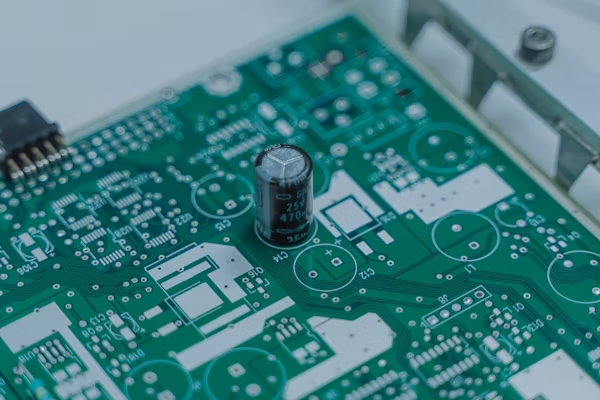In today’s world of interconnected devices, innovation in microcontroller boards plays a crucial role in shaping the Internet of Things (IoT) landscape. Among the many options available, a fascinating device called Antennino is carving out its niche by combining affordability, versatility, and wireless communication into one compact board. If you’re curious about a low-cost, low-power solution that brings Arduino compatibility together with integrated communication and sensing capabilities, Antennino might just be what you’re looking for.
This article dives deep into what Antennino is, why it matters, its unique features, and how it can empower hobbyists, developers, and engineers alike to build smarter connected projects with ease.
What is Antennino?
Antennino is a compact, Arduino-compatible microcontroller board designed specifically to enhance wireless communication capabilities. Its name cleverly fuses the words “Antenna” and “Arduino,” highlighting its core function as an Arduino-like device with integrated radio communication features. Built around the popular Atmel chip, Antennino works seamlessly with the traditional Arduino Integrated Development Environment (IDE), making it easy for users already familiar with Arduino to adopt it.
Unlike a typical Arduino board, Antennino is equipped with built-in sensors and a communication bus, enabling it to collect data from its surroundings and share it wirelessly with other devices. This makes it an excellent choice for IoT projects where remote data acquisition and communication are essential.
The Power of Low Cost and Low Power Consumption
One of the standout qualities of Antennino is its affordability. Many microcontroller boards with wireless capabilities can be pricey, limiting accessibility for hobbyists or educational environments. Antennino breaks that barrier by delivering a feature-rich platform at a budget-friendly price.
Equally important is its low power design. For IoT devices that often run on batteries or energy-harvesting systems, conserving power is vital to extend operational life. Antennino’s architecture is optimized to draw minimal current, allowing it to run longer on limited power sources, which is perfect for remote or mobile applications.
Arduino Compatibility: A Familiar Environment
Arduino has become the go-to platform for beginners and professionals alike because of its ease of use and vast community support. Antennino takes full advantage of this by being fully compatible with the Arduino IDE. This means you can program it just like any other Arduino board, using familiar coding languages and libraries.
For developers, this compatibility means there’s no steep learning curve. You can start creating and deploying wireless sensor networks, remote monitoring setups, or automation projects quickly, leveraging the vast Arduino ecosystem.
Integrated Communication Bus and Sensors
A key innovation in Antennino is the integration of a communication bus alongside built-in sensors. The communication bus acts as a highway for different components and sensors on the board to share information internally. This design simplifies connecting multiple devices or sensor modules, reducing the need for complicated wiring.
The onboard sensors provide the ability to gather real-world data directly from the environment, such as temperature, humidity, or light intensity. This data can then be transmitted wirelessly, making Antennino an ideal choice for smart home automation, environmental monitoring, and industrial IoT applications.
Wireless Connectivity: The Heart of Antennino
What truly sets Antennino apart from traditional Arduino boards is its embedded wireless link. Whether it’s Wi-Fi, Bluetooth, or a proprietary RF module (depending on the model and setup), this wireless capability enables Antennino to communicate effortlessly with other devices, gateways, or the internet.
This means you can place Antennino boards in remote or hard-to-reach locations without worrying about cables, expanding the possibilities for data collection and control. From smart agriculture to asset tracking, the board’s wireless nature is a game-changer for many IoT use cases.
Versatility: Multi-role Functionality
Antennino isn’t limited to a single purpose. Thanks to its modular design and sensor integration, it can be configured to act either as a remote sensing unit or as a gateway that collects and forwards data from multiple nodes.
This multi-role flexibility is crucial when building scalable IoT systems. Instead of buying different hardware for every function, you can use Antennino boards interchangeably, simplifying inventory and design while reducing costs.
How Antennino Benefits Different Users
For beginners, Antennino offers an accessible entry point into wireless IoT development. The familiar Arduino environment, combined with integrated communication and sensors, makes it easy to prototype connected devices quickly.
For educators, Antennino is a practical teaching tool. It demonstrates key concepts like microcontroller programming, sensor integration, and wireless communication all on one board.
For professional developers and engineers, Antennino’s low power, cost-effectiveness, and flexibility make it a solid option for deploying large-scale sensor networks, industrial monitoring systems, or smart city infrastructure.
Potential Applications of Antennino
The combination of wireless communication, sensor integration, and low power design opens the door to numerous applications:
Environmental Monitoring: Track temperature, humidity, or pollution levels in real time over wide areas without cables.
Smart Agriculture: Monitor soil moisture or crop conditions remotely to optimize irrigation and improve yields.
Home Automation: Control lights, HVAC systems, or security sensors wirelessly.
Industrial IoT: Gather machine status data or detect anomalies for predictive maintenance.
Asset Tracking: Keep tabs on valuable equipment or vehicles with wireless sensor nodes.
Educational Projects: Use in classrooms to teach IoT, programming, and electronics basics.
Getting Started with Antennino
To start working with Antennin’o, you’ll need a basic understanding of Arduino programming, which uses a simplified version of C/C++. After setting up the Arduino IDE on your computer, you can connect Antennin’o to upload your programs.
Thanks to its wireless capability, you can then deploy your Antennino board in your target location and start collecting sensor data or controlling devices remotely. Additionally, the modular nature means you can add or swap sensor modules as needed to fit your project requirements.
Challenges and Considerations
While Antennino is a powerful and versatile board, users should be mindful of a few considerations:
Wireless communication can be susceptible to interference or range limitations depending on the environment and antenna quality.
Low power designs often require careful programming to manage sleep modes and avoid unnecessary energy drain.
Compatibility with various sensors or communication protocols might require additional configuration or code customization.
Nevertheless, with proper planning and understanding, these challenges are manageable and well worth the benefits.
The Future of Antennino and IoT
As the IoT ecosystem grows, devices like Antennino represent an important step toward making connected technology more accessible and flexible. The combination of wireless communication, sensor integration, low cost, and Arduino compatibility makes it a compelling choice for a wide range of projects.
Ongoing developments may include enhanced wireless standards, better energy harvesting, and more sophisticated onboard sensors, all of which could further expand Antennino’s potential.
Conclusion
Antennino is more than just another Arduino board. It’s a thoughtfully designed platform that merges the power of wireless communication with sensor integration in an accessible, low-cost package. Whether you’re a hobbyist, educator, or professional, Antennino offers a versatile solution to build smart, connected devices with ease.
By lowering barriers related to cost, power consumption, and programming complexity, Antennino empowers users to experiment and innovate in the IoT space. With its multi-role functionality and robust compatibility, it stands out as a valuable tool for anyone eager to bring their ideas into the wireless, sensor-driven world.
Frequently Asked Questions (FAQs) about Antennino
Q1: Is Antennino compatible with standard Arduino libraries?
Yes, Antennino works with the Arduino IDE and supports most standard Arduino libraries.
Q2: What kind of wireless communication does Antennino support?
It typically supports various wireless links, such as RF modules, Wi-Fi, or Bluetooth, depending on the specific model or configuration.
Q3: Can I use Antennino for battery-powered projects?
Absolutely, its low power design makes it ideal for battery-operated IoT devices.
Q4: Does Antennino come with built-in sensors?
Yes, the board integrates sensors for environmental data acquisition, but you can also add external sensors as needed.
Q5: Can Antennino function as both a sensor node and a data gateway?
Yes, one of its key features is its multi-role capability, allowing it to act as either a remote module or a data collector.
Q6: Where can I buy an Antennino board?
Antennino boards are available through select online electronics retailers and specialized IoT hardware suppliers.











